Getting into the Games
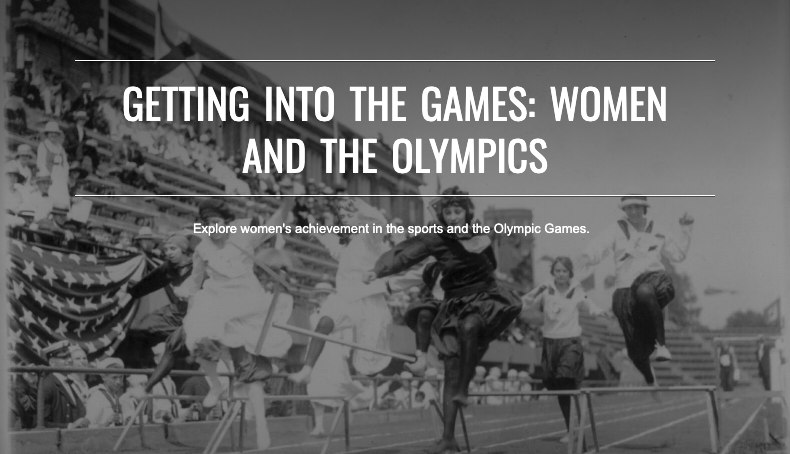
 Rowing (Sep 21, 1919)
Rowing (Sep 21, 1919)Library of Congress | Washington, DC | National Women’s History Museum
Inventing Sports
American women have been sporting mad almost since sports were invented.
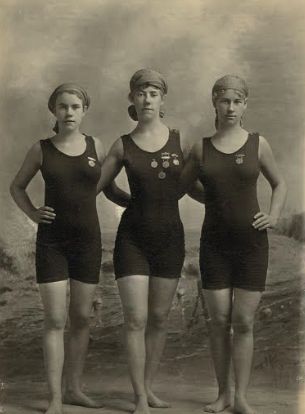 Swimming Competitors (1910-1930)
Swimming Competitors (1910-1930)by Library of Congress
National Women's History Museum
However, the pathway to participation proved to be more a marathon than a sprint.
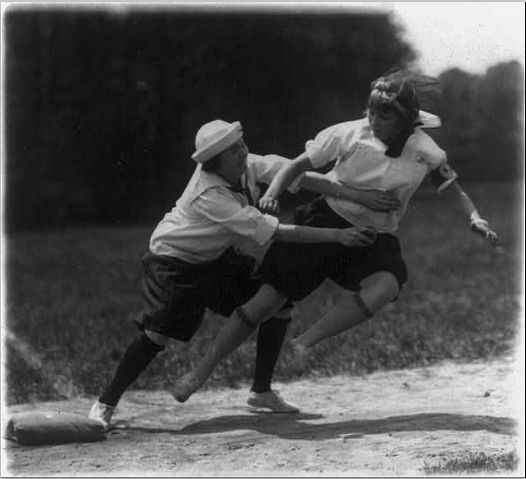 Baseball Players (May 9, 1925)
Baseball Players (May 9, 1925)by Library of Congress
National Women's History Museum
Sporting Mad
Between the end of the Civil War and the turn of the 20th century, Americans embraced sports.
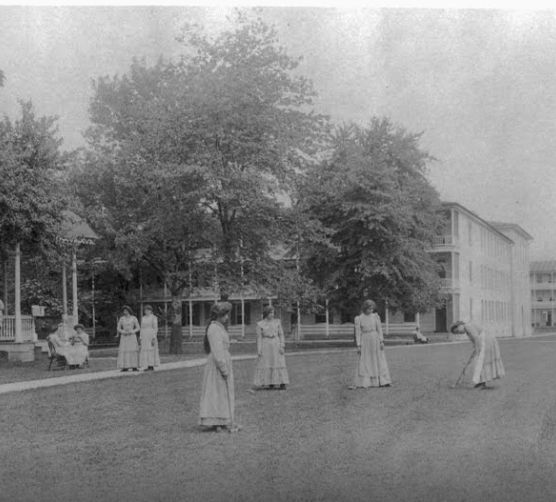 Croquet (1901)
Croquet (1901)by Frances Benjamin Johnston | Library of Congress
National Women's History Museum
Enthusiasm for croquet, baseball, tennis, golf, and bicycling swept America—including women—in waves of popularity.
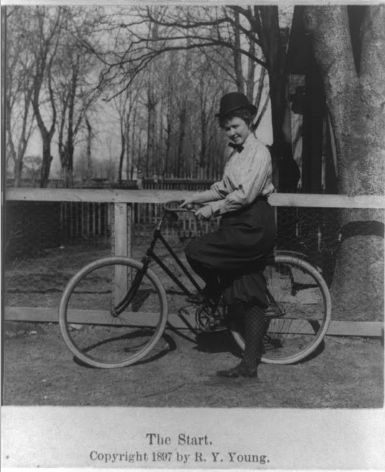 Bicycle (1897)
Bicycle (1897)by R.Y.Young/American Stereoscopic Company | Library of Congress
National Women's History Museum
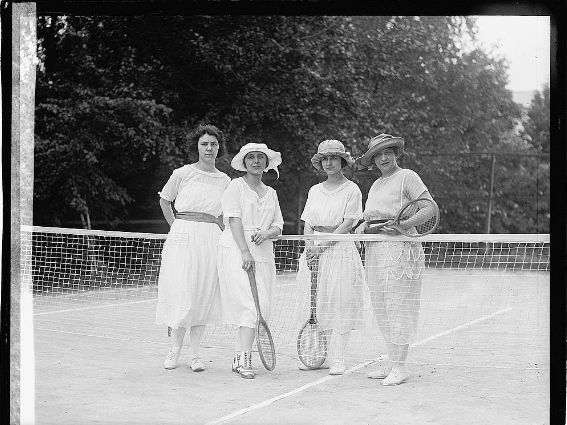 Tennis (May 31, 1922)
Tennis (May 31, 1922)Library of Congress
National Women's History Museum
People at every social level formed teams, joined leagues, and learned the rules of the games.
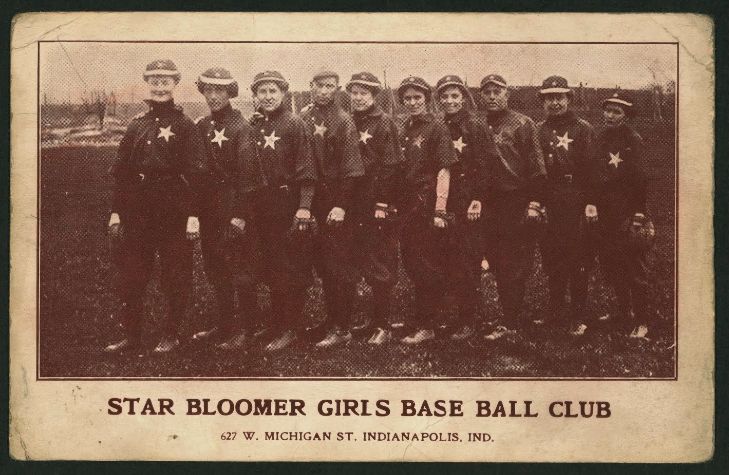 Bloomer Girls (1905)
Bloomer Girls (1905)Library of Congress
National Women's History Museum
Bloomer Girls
Urbanization and increased leisure time led working class men and women to sports both as spectators and participants. "Bloomer Girls" took to the baseball diamond to challenge amateur, semi-pro, and minor league men's teams. Nicknamed for their uniforms—the loose Turkish-style trousers created by Amelia Bloomer—hundreds of teams 'barnstormed' the country during the late nineteenth and early twentieth centuries, providing women an opportunity to travel and play the traditionally all-male sport.
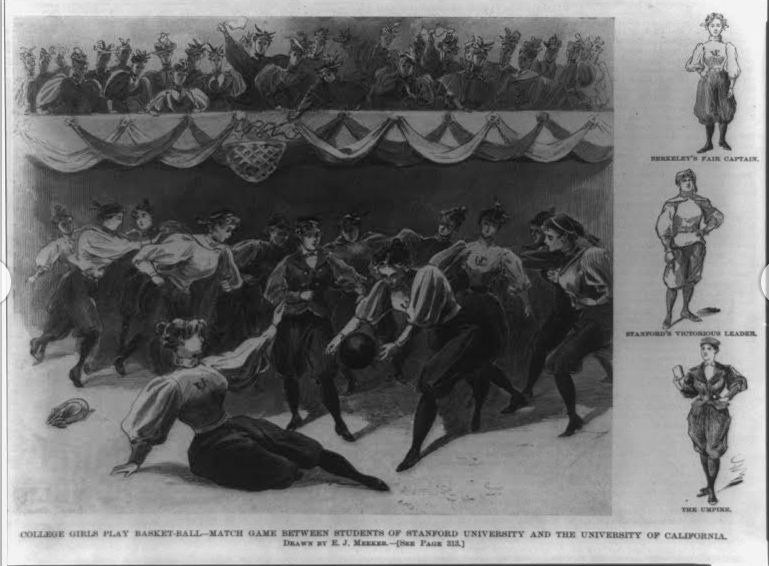 College Basketball (1896)
College Basketball (1896)Library of Congress
National Women's History Museum
College Girls
College women eagerly took up sports, especially those that allowed for competition. Though, worries over propriety led to male spectators being banned. The first intercollegiate women’s basketball game was played between Stanford and the University of California, Berkeley in 1896. Stanford won 2-1. Women’s intercollegiate play declined from the 1930s through the end of the 60s. The first NCAA women’s basketball championship was not played until 1972.
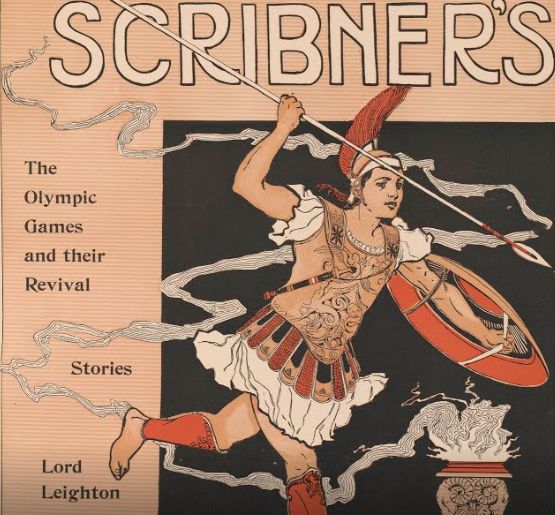 Olympic Magazine Cover (1896)
Olympic Magazine Cover (1896)Henry Mayer / Library of Congress
National Women's History Museum
Lighting a Flame
Pierre, baron de Coubertin founded the Olympics as a celebration of men’s sporting achievement. Consequently, the inaugural 1896 games in Athens, Greece, excluded women.
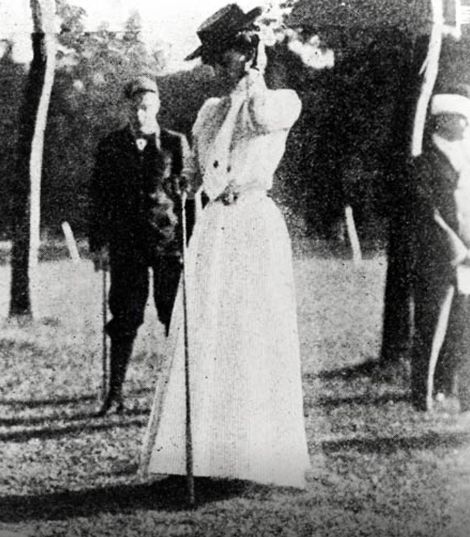 Margaret Ives Abbott (1900)
Margaret Ives Abbott (1900)by Wikimedia | National Women's History Museum
Though not officially sanctioned, women participated in the second and third games in 1900 and 1904. It was not until 1908 in London that female athletes were specifically included. Margaret Abbot took first in women's golf in Paris in 1900, making her the first female American Olympic champion.
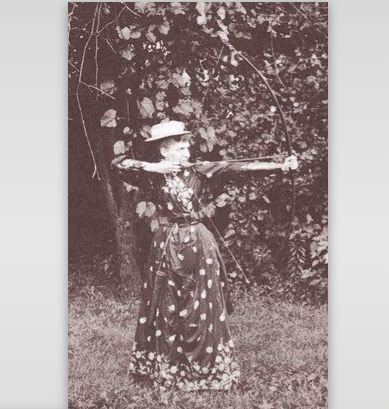 Lida Scott Howell
Lida Scott Howellby Archery Hall of Fame | National Women's History Museum
Matilda “Lida” Howell won three archery gold medals at the 1904 St. Louis Olympics. Howell captured 17 US national archery championships between 1883 and 1907.
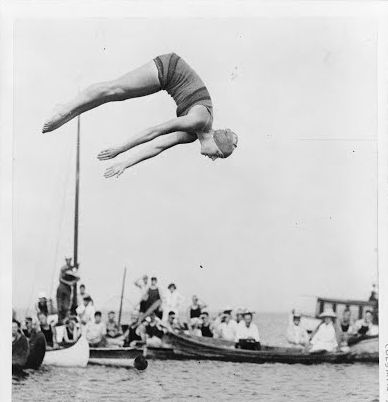 Aileen Riggin (1922)
Aileen Riggin (1922)by Library of Congress | National Women's History Museum
The IOC slowly increased the number of women’s athletic events. American women entered Olympic swimming and diving events in 1920.
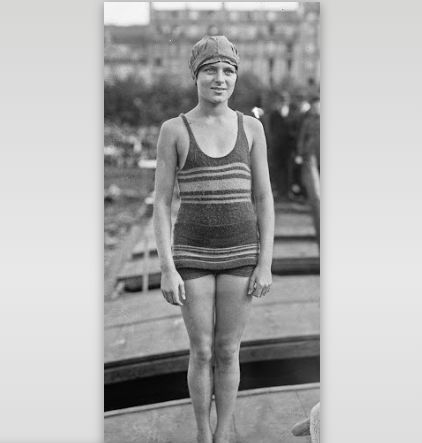 Aileen Riggin (1920)
Aileen Riggin (1920)by Library of Congress | National Women's History Museum
Fourteen-year-old Aileen Riggin, the youngest athlete on the US team, won the diving gold medal in 1920 in Antwerp, the first games to include women's aquatic events.
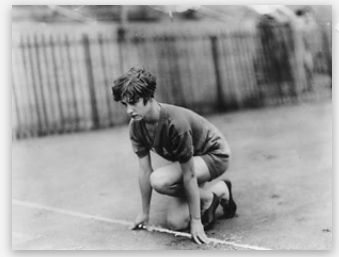 Elizabeth Robinson
Elizabeth Robinson by Library of Congress | National Women's History Museum
Elizabeth “Betty” Robinson of Riverdale, Illinois won the 100 meters in 1928 in Amsterdam, the first Olympic games to include women’s track and field events.
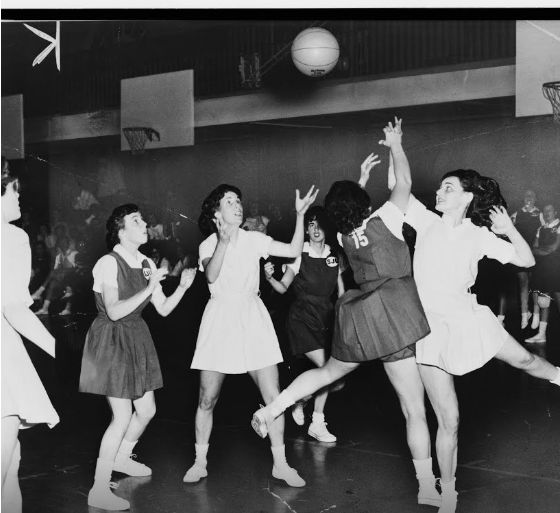 Basketball Game (1961)
Basketball Game (1961)by Library of Congress | National Women's History Museum
Clearing Hurdles
Women’s participation in organized sports declined from the 1920s to the 1960s as colleges eliminated programs and intercollegiate competition. Fewer than 30,000 women played collegiate sports in 1970. While club teams continued to be popular, many sports lacked the funding to produce world class athletes.
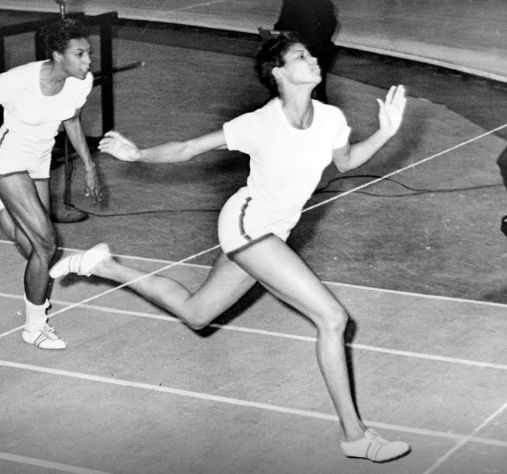 Wilma Rudolph (1961)
Wilma Rudolph (1961)by Library of Congress | National Women's History Museum
While elite, predominantly white universities eliminated women's athletic programs, many historically black colleges retained them. The most prolific program arose at Tennessee State University where Ed Temple served as head women's track coach from 1950 to 1994. During his tenure, forty members of his famed Tigerbelle teams represented Tennessee State in Olympic competition, winning a total of 23 medals (13 Gold, 6 Silver, and 4 Bronze). Temple coached famed Olympian Wilma Rudolph to three gold medals at the 1960 Rome Olympics.
Title IX
On June 23, 1972, Congress enacted Title IX of the Education Amendments of 1972 prohibiting sex discrimination in any educational program or activity receiving any type of federal financial aid. Title IX alone did not immediately create access to sports for girls. Many fought to ensure its implementation.
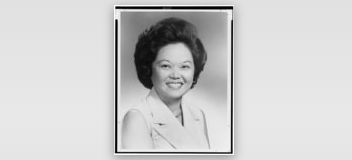 Patsy Mink (1960-1970)
Patsy Mink (1960-1970)by Library of Congress | National Women's History Museum
US Representative Patsy Mink (D-Hawaii) was a principal author of the Education Amendments of 1972—later renamed the Patsy T. Mink Equal Opportunity in Education Act. A former high school basketball player who was restricted to half-court play under the girls’ rules, Mink made fighting gender discrimination a hallmark of her Congressional career.
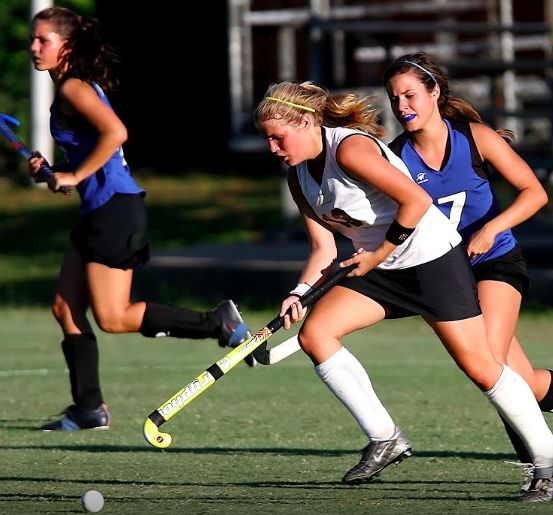 Field Hockey
Field Hockeyby Keijj44/Pixabay
National Women's History Museum
Got Game
Colleges and high schools gradually reintroduced women’s varsity sports following Title IX, raising the number of female athletes. Expanded slots on high school teams along with the tantalizing possibilities of college athletic scholarships encouraged the proliferation of girls’ sports programs at the elementary and middle school levels.
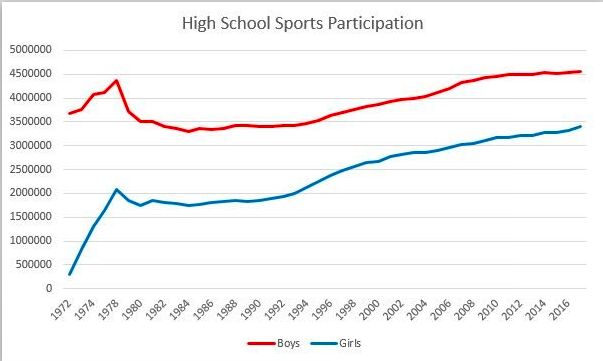 High School Sports Participation
High School Sports Participation National Women's History Museum
Since the passage of Title IX, high school girls' sports participation increased ten times and collegiate women's six-fold. While the number of high school girl athletes has gone up, so has the number of high school boys. (Though a gap remains.)
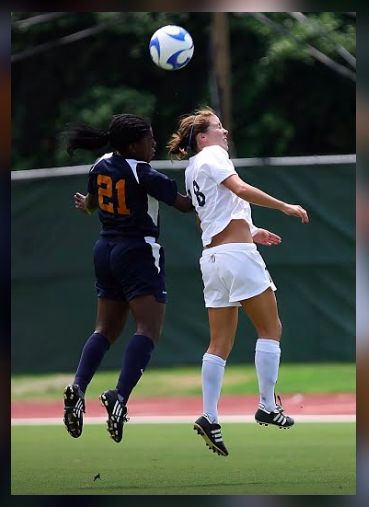 Soccer
Soccerby Keijj44/Pixabay
National Women's History Museum
Increasing numbers of girls and women in organized sports and an emphasis on women’s athletic achievements demonstrate that slowly but surely, women are getting back in the game.
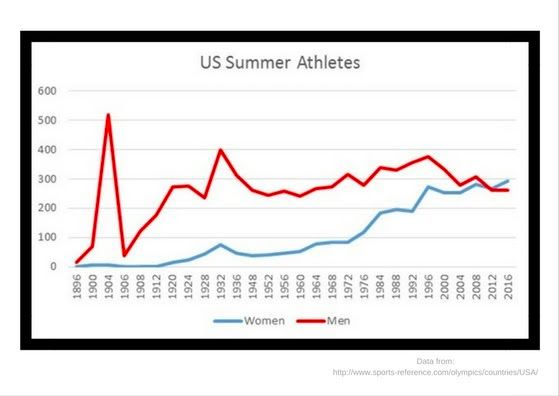 US Summer Graph with Boarder
US Summer Graph with Boarder National Women's History Museum
Women of Summer
In 1991, the IOC implemented a requirement that new Olympic sports include women’s events, exponentially increasing the number of female Olympians. The London 2012 US team was the first to feature more women than men. Correspondingly, US women outperformed the men in the medal count.
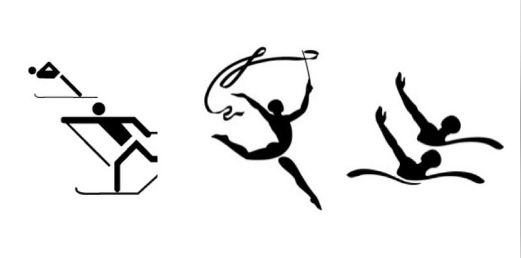 Rhythmic Gymnastics
Rhythmic Gymnastics National Women's History Museum
As of 2018, there are only three Olympic sports that are not open to both men and women. These sports are Nordic combined, rhythmic gymnastics, and synchronized swimming. Nordic combined will be open to both men and women at the 2022 winter games in Beijing but there are no plans to integrate rhythmic gymnastics or synchronized swimming.
Credits
National Women's History Museum
Director of Program: Elizabeth L. Maurer
Content Development Intern: Abigail Thompson
Updated and Edited by Kenna Howat, Program Assistant
